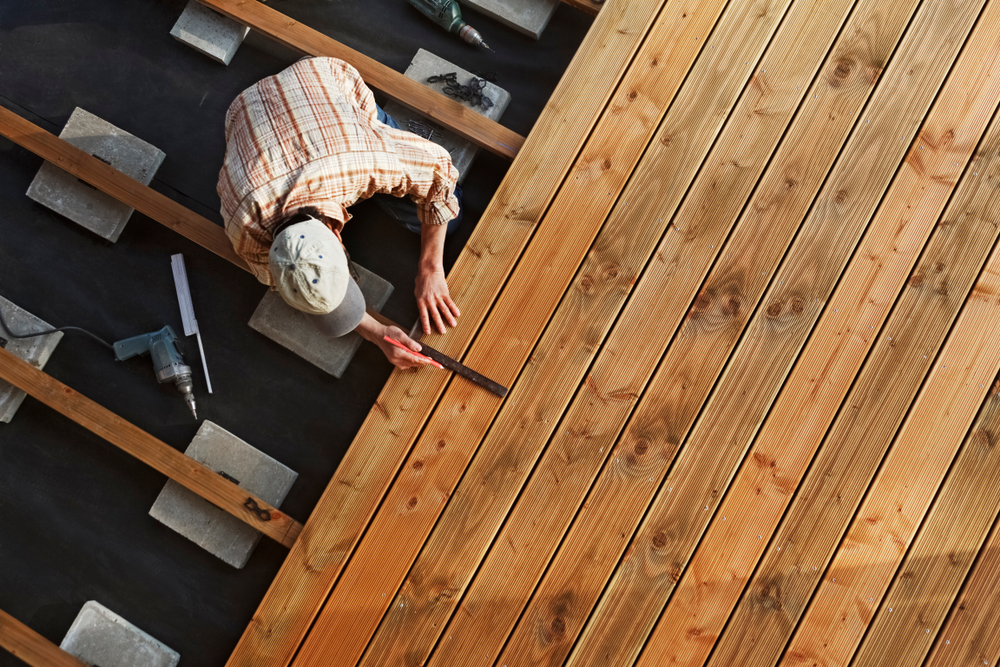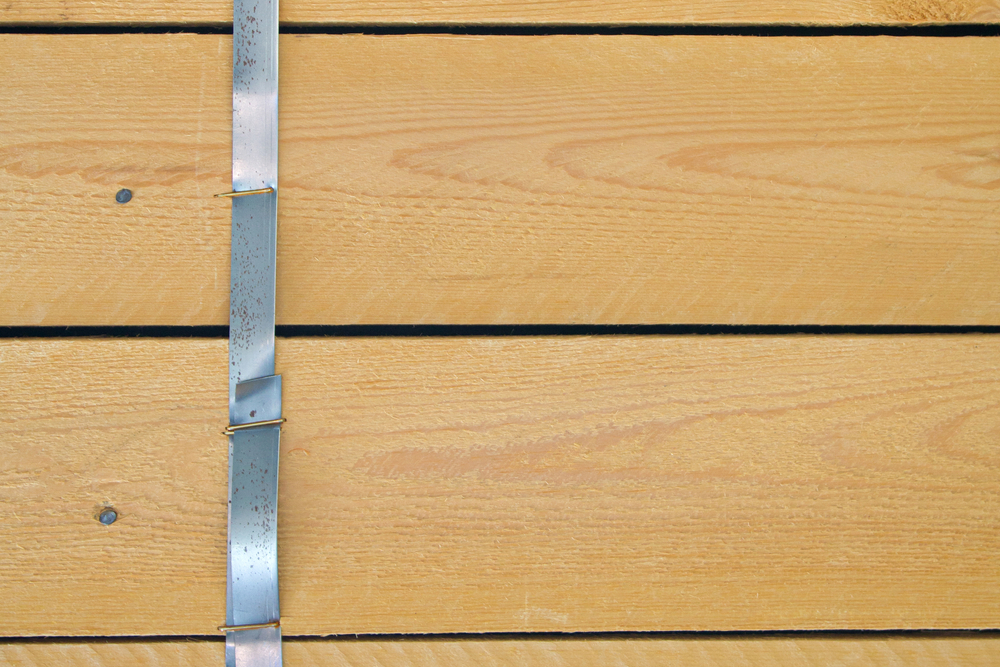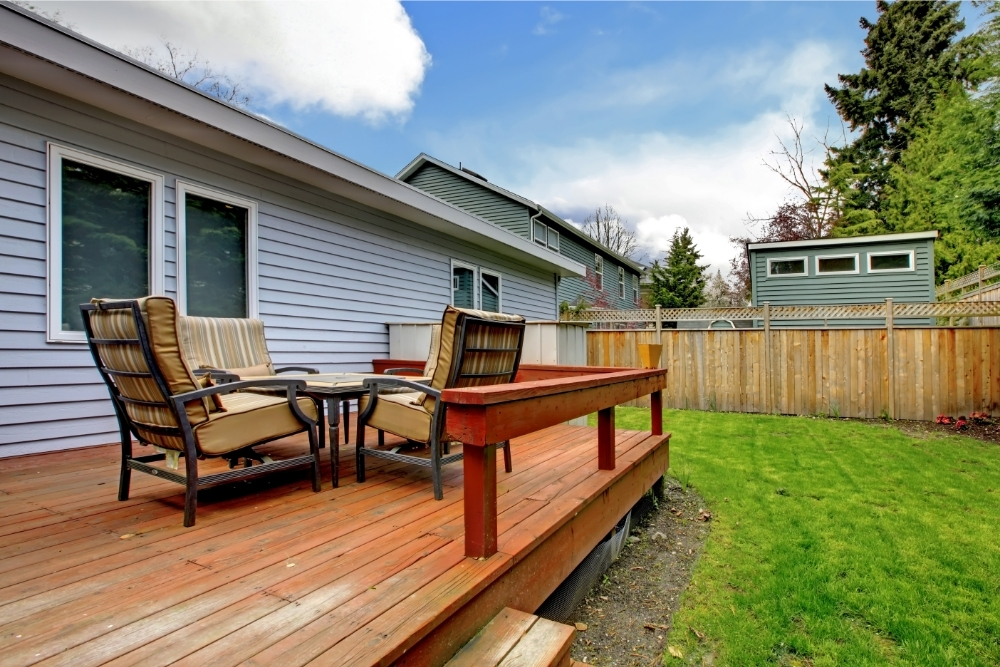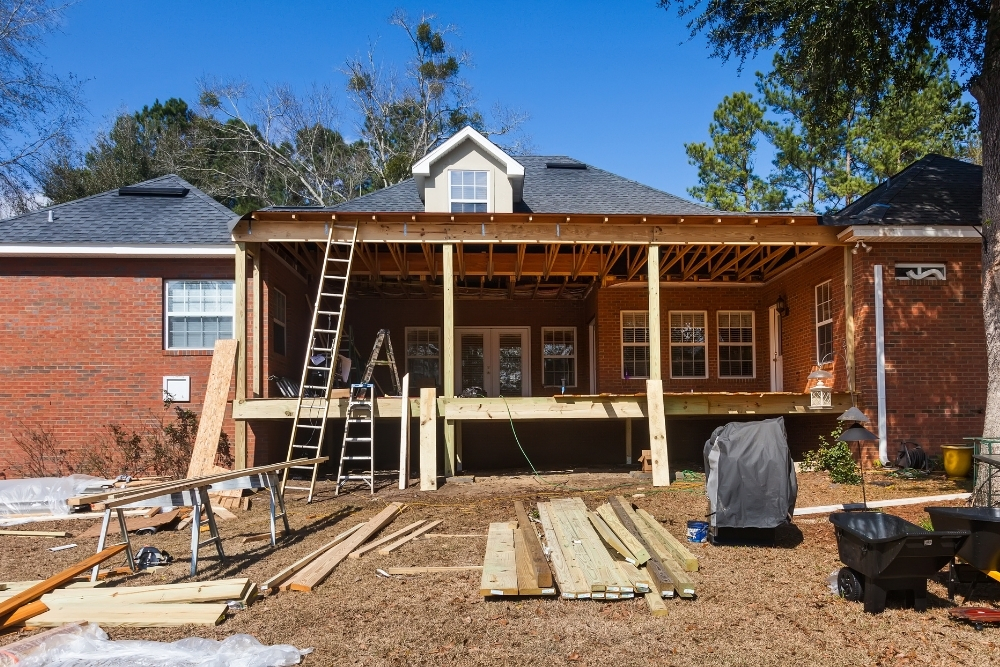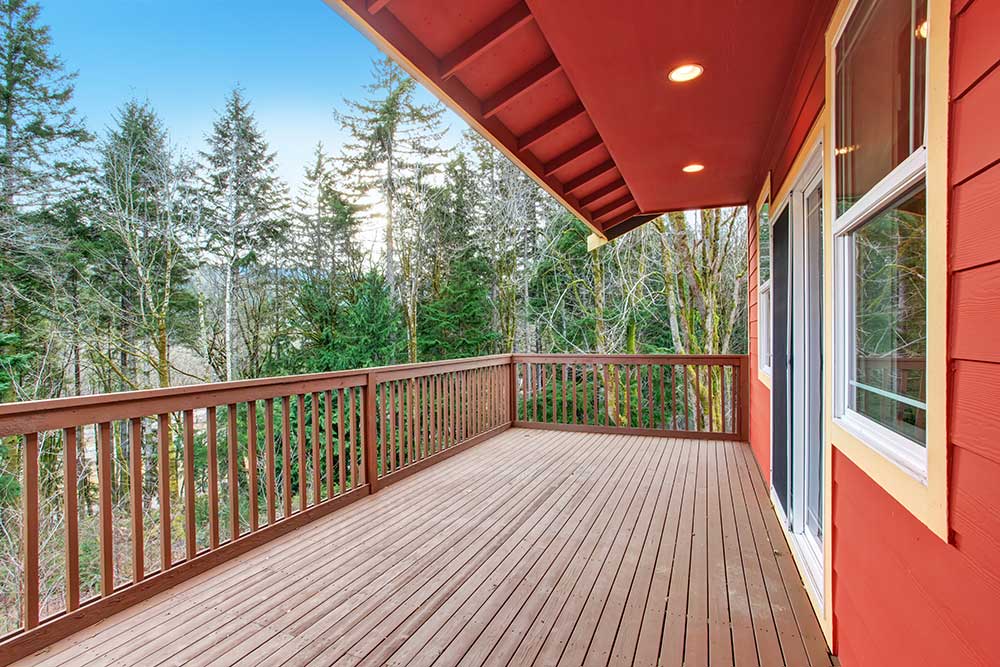If you’re currently undertaking a home improvement project and want to transform your outdoor living space, then you might currently have your sights set on a simple yet stand-out decking area!
Getting deck boards installed professionally can come at a cost, so before you begin dialing around for quotes, we recommend reading through this guide – because they’re relatively simple to lay, especially if you’re a keen DIY’er.
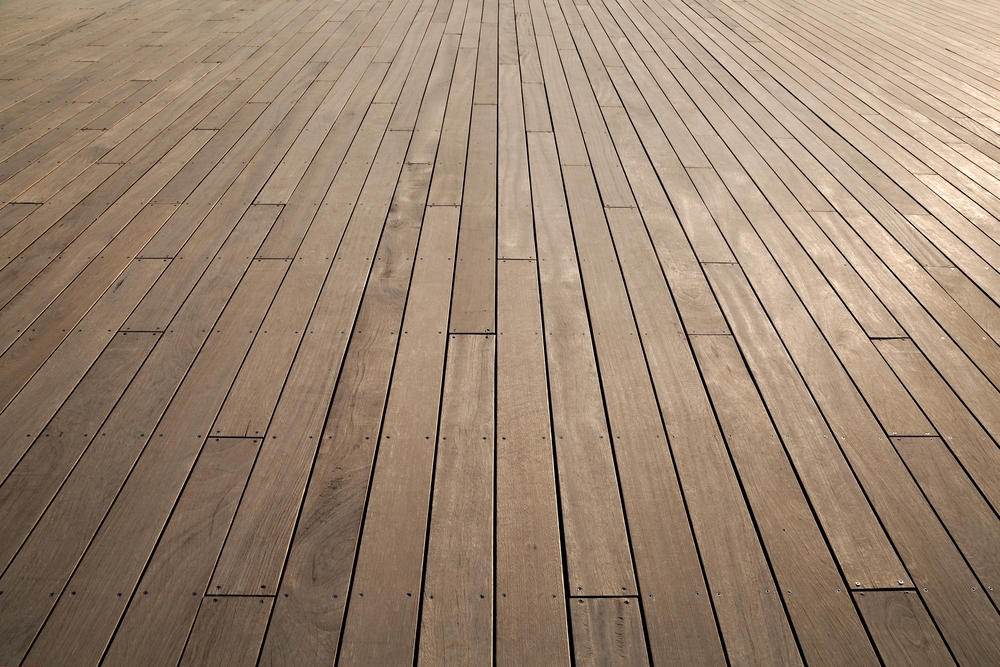
To help you out, this guide is going to be talking you through the differences between staggered and lined up boards, whether or not the two styles make a difference, as well as some additional tips and tricks to make sure that your deck is laying process goes down without a hitch.
So, whenever you’re ready, let’s jump right in!
Will it make a difference whether I choose to stagger deck boards or not?
There are many ways to build a deck, and the direction in which you will likely need to lay your deck boards will heavily depend upon which way the joists.
If you are planning on creating a decking area that will be attached to your house, then the decking boards will need to run parallel (or lined up) to the house, and the main reason for this is simply due to the fact that the joists need to run vertically.
However, if you are planning to create a decking area that will not require the deck to be attached to your house (or a similar structure), you will then be able to consider staggering your decking boards or lining them so that they will run in a perpendicular direction.
With that being said, it does greatly matter whether or not you choose to stagger your decking boards or line them up side by side as if you happen to get it wrong and pick an option that is not compatible with the joists, then your finished decking will not structurally sound.
Wondering why that is?
Well, as we’ve already mentioned above, the way that a decking board needs to be installed relies greatly on the joists, so if you happened to install your decking parallel to the joists, then it would mean that your installed decking boards would then not be able to (safely) hold weight.
This is a serious safety issue, as due to the incorrectly installed decks, there would be a much higher chance of the boards breaking, which could lead to a serious injury – not to mention a hefty repair cost!
As a side note, you should make sure to remember that, regardless of which way you choose to lay your decking, it is highly important to remember that your boards should always be installed with the ride side on the bottom.
By installing your decks with the ride side down, you will be ensuring that a regular and consistent airflow will be able to permeate throughout the decks (including underneath them) which will ensure proper water drainage, which will prevent your decks from becoming damaged.
In addition to this, you should also make sure that your boards have been fitted with a tilt that follows the same direction as the grooves, as this will ensure that your decking stays in place.
When should I stagger deck boards?
As we’re sure you already know, deck boards serve as the “finishing touch” of a decking area and help to beautify the space. Besides that, they also serve a functional purpose, as they are what you, your family, and your guests will see, as well as what you will all walk and sit on.
By opting to stagger your deck boards, not only will you be creating an interesting deck board pattern, but you will also be decreasing the number of screws and nails that need to go into one joist, which will speed up the installation process.
In addition to this, staggered deck boards are also considered to be stronger than deck boards that have been installed in a side-by-side manner, as the staggered pattern is able to strengthen the overall deck by spreading the seams across more than one joist.
By doing this, it means that weight is able to be distributed more evenly across the deck, which reduces the chance of any weak points.
So, to follow from what we have discussed above, you will be able to stagger your deck boards if you have joists that do not need to run in a vertical direction from your home or another connected structure.
In order to stagger your deck boards, you will need to begin at one corner of your decking area and take a full board. Ensuring that it is running perpendicular to your joists, you will need to take measurements, cut, and then lay the following deck board at the end of the first so that the two jagged ends are centered directly on the joist.
Then, use the piece that you cut off directly next to the first plank in order to create the next row and so forth. Continue doing this until you have completed your decking area.
When should I line the deck boards up?
Even though you can install lined deck boards for preference or aesthetic reasons, technically speaking, lined deck boards will be structurally required if you are planning on installing decking that has joists that will need to run vertically, an example being if you are planning on installing decking that is connected to your house.
As we have mentioned above, even though lined deck boards are considered to be slightly weaker than staggered deck boards (due to the way that the decks are spread across more than one joist) it is worth noting that lined deck boards do require more screws and nails to be inserted into each joist, which will help to ensure that your lined deck boards are able to withstand weight, as well as having a lower chance of falling through,
Final Thoughts
So, there you have it! Now you know the differences between staggered and line deck boards, as well as the different instances in which the two may need to be installed. Prior to laying your boards, make sure that you are installing them in accordance with the direction of your joists, and you won’t go far wrong! Thank you for reading.

